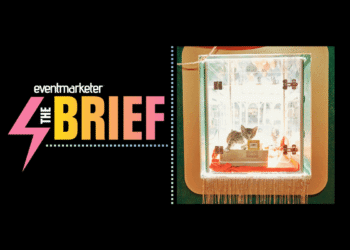You can’t scale what you can’t collect.
In the race to grow, businesses often pour everything into product and sales, only to be tripped up by outdated or inflexible invoicing. But beneath every high-growth story is an operational layer that rarely gets the spotlight: invoicing systems.

While it may seem like a back-office concern, your invoicing system directly impacts customer satisfaction, retention, and revenue flow. If it’s slow, inflexible, or disconnected from your core tools, the effects ripple through every department from finance to customer success.
Invoicing isn’t just about getting paid. It’s about how you structure and sustain your business. And in SaaS and service-based businesses, that structure needs to be flexible, automated, and built to scale.
SaaS Invoicing Software Is a Growth Lever, Not Just a Finance Task
Too often, invoicing is treated as a back-office chore, something you set up once and forget. But for SaaS and service-based companies, invoicing is deeply tied to retention, revenue stability, and customer trust.
Churn isn’t limited to a customer experience problem. It’s a financial one too. Poor billing process, like missed payment reminders, inconsistent billing cycles, or unclear invoices, erodes trust quickly. Once that trust is broken, customers are more likely to churn, even if your product performs.
And that churn adds up. Everyone knows it costs more to acquire a new customer than to retain an existing one. However, SaaS and service companies still underestimate how much of that churn is preventable with better invoicing practices.
Invoicing, when done right, isn’t just about collecting payments. It’s about creating a seamless payment process that reinforces value, reduces friction, and strengthens the relationship between you and your customers.
The Real Complexity of SaaS Billing
SaaS billing isn’t just “monthly payments”. It’s a living, breathing system tied directly to your business model and customer lifecycle. And it gets complicated fast.
Every customer starts their billing journey at a different time. Even if they’re all on the same plan, one might upgrade mid-cycle, another might cancel before renewal, and a third might shift to a usage-based model after a trial. Your invoicing system needs to handle all of that without breaking.
To scale, SaaS companies must support:
- Tired pricing for different user needs
- Usage-based billing that reflects real-time consumption
- Milestone or flat-fee billing for service-based or project-based models
- Recurring revenue models that account for renewals, upgrades, downgrades, and cancellations
If your billing system can’t handle these billing cycles or adapt to new pricing strategies, offering becomes a manual headache. It’s not just inefficient, it’s unsustainable.
Why Traditional Invoicing Doesn’t Work Anymore
Legacy invoicing models, especially Net 30 or Net 15, weren’t built for SaaS. They assume everyone pays on the same schedule, with the same payment process, and offer little flexibility for real-world business models. That’s a problem.
According to a recent Kaplan survey, 44% of SaaS and service-based businesses report severe or critical issues, with 22% reporting a 10% loss of revenue.
Net 30 or 15 cycles delay cash flow, increasing the risk of non-payment, especially if your customer upgrades or needs to cancel early. These rigid billing cycles can leave businesses stuck waiting for money they’ve already earned.
Manual intervention becomes inevitable when businesses’ invoicing systems can’t support flexible pricing models, such as tiered pricing or hybrid plans. And it’s not just a finance problem. It slows down customer service, clogs up sales handoffs, and forces your team to rely on outdated, disconnected tools.
Modern companies need automated invoicing systems and payment gateways that match the way they operate, not the tools that hold them back.
What Happens When Your System Can’t Keep Up
As your business scales, your billing complexity does too. Without the right invoicing system infrastructure, even minor breakdowns in your invoicing system can cause ripple effects across your entire operation.
- Inaccurate billing disrupts trust. When a client gets overcharged or billed on the wrong date, whether the fix is manual or not, it still feels like a breach. That friction increases churn risk and weakens long-term relationships.
- Manual processes create bottlenecks. Without automated invoicing, your team wastes time fixing errors, reissuing invoices, or manually managing payment reminders. That’s lost time that could have been spent on strategy or growth.
- Inconsistent reporting stalls decision-making. When systems aren’t integrated, pulling accurate data like customer payments, recurring revenue, or outstanding invoices becomes a scramble. That hurts both finance and operations.
- Siloed teams lose visibility. In SaaS and service-based businesses, sales, support, and finance all need access to customer data and billing activity. A disconnected stack leads to missed upsell opportunities, delayed issue resolution, and frustrated clients.
Strong billing systems aren’t just helpful, they’re essential. And without them, every new customer increases your risk.
What to Look for in a Scalable SaaS Invoicing System
A modern SaaS billing system should do more than send invoices; it should actively support your business model, scale with you, and make the payment process frictionless for both teams and clients.
Here’s what to prioritize:
- Flexible billing cycles and triggers. Break free from Net 30/15 constraints. Look for systems that allow dynamic billing cycles tied to milestones, usage, or customer-specific terms, giving you more control over cash flow.
- Built-in subscription and usage-based billing. Whether you rely on tiered pricing, usage-based billing, or hybrid plans, your system should support these models natively, not as a workaround.
- Integrated, real-time reporting. Track recurring revenue, churn, and cash flow without needing to export spreadsheets. Instant access to clean customer data helps leaders make faster, smarter decisions.
- Seamless system integration. Your invoicing tool should plug into your CRM, accounting software, and analytics dashboard so every department speaks the same language and no one’s working blind.
- A user experience that feels intuitive. Clients shouldn’t need a walkthrough to understand an invoice. Clean, branded invoices and payment portals with clear payment reminders increase on-time payments and reduce support tickets.
At scale, the right SaaS invoicing software becomes part of your product, not just a back-end system. Choose one that reinforces your brand experience while protecting your bottom line.
Invoicing Isn’t Just a Back-Office Tool; It’s a Strategic Lever
Invoicing often lives quietly in the background until it breaks. But in SaaS and service-based businesses, it’s one of the most powerful levers you have for protecting recurring revenue and accelerating growth.
The right SaaS invoicing systems give you:
- More control over cash flow
- Cleaner, real-time visibility into customer payments
- A smoother payment process for clients
- Flexibility to evolve your pricing strategy over time
This isn’t just about chasing revenue. It’s about reducing churn, building trust, and unlocking new paths to scale without backtracking every time your billing can’t keep up.
Billing is part of the product. Treating it like an afterthought creates friction that compounds over time. Instead, invest in flexible pricing models, automated invoicing, and tools that grow with your customers.
Your business model deserves invoicing systems that make it stronger.


















